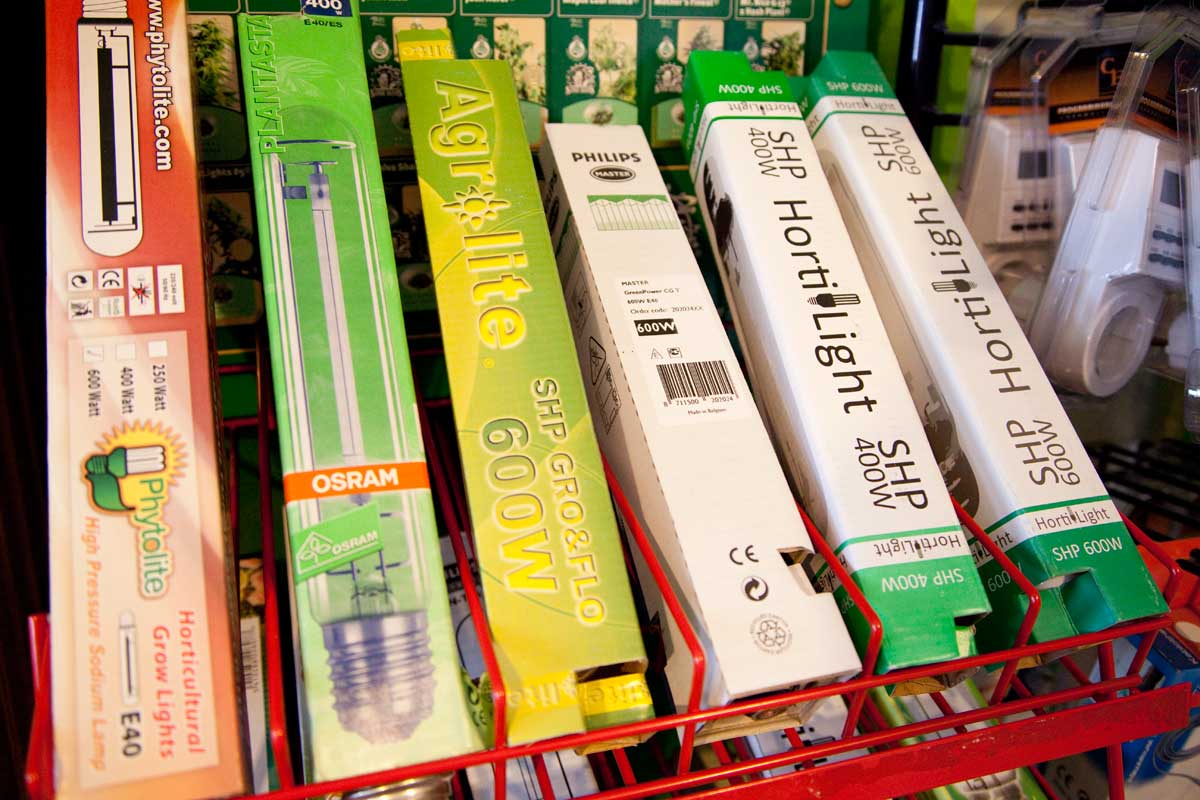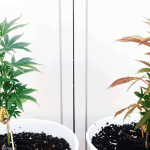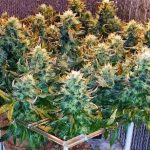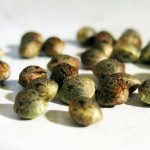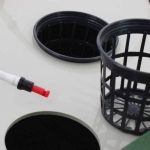What types of marijuana lighting are there?
You likely already know that plants require light to photosynthesize and grow. When growing plants indoors, sunlight can be replaced with artificial light. Simple enough, but do you know which types of lighting are best for marijuana cultivation and the benefits of each?
Lighting for an indoor cannabis grow demands special attention to optimize conditions for maximum results. Key factors include light intensity, wattage, types of bulbs, and specific equipment. This guide explores these elements in detail to help you make informed decisions for successful indoor cultivation.
How to choose good marijuana lighting?
First of all we must bear in mind that the Cannabis plant needs one light for growing, and a different one for flowering. Let’s look at each of these issues in terms of the two main stages of development of marijuana plants: growth and flowering.
The natural growth of cannabis plants will be during the spring, which is why the light is bluer. While flowering is in the summer, when the light is redder. For this reason, indoor grow lamps should be changed to emit blue light during growth and red light during flowering. This helps the plant to grow naturally and healthily, as well as to perform its phases correctly.
Light spectrum in marijuana lighting
During the growth stage, marijuana plants need light with a light spectrum that suits their needs. This means that they need a light with a higher proportion of blue light to stimulate vegetative growth. This means that the light should have a higher proportion of blue light (between 400 and 500 nanometres) and a lower proportion of red light (between 600 and 700 nanometres).
During the flowering stage, cannabis plants need a light with a light spectrum that suits their needs. This means that they need a light with a higher proportion of red light to stimulate flower production. This means that the light should have a higher proportion of red light (between 600 and 700 nanometres) and a lower proportion of blue light (between 400 and 500 nanometres).
In short, for the cultivation of marijuana, you need a light with a light spectrum that matches the needs of the plant at each stage of development. This means that the light should have a higher proportion of blue light during the growth stage and a higher proportion of red light during the flowering stage.
When talking about the spectrum of light we can also measure it in colour temperature. Blue lights have a colour temperature between 5,000 and 6,500 K and are suitable for the growing period. While for flowering a colour temperature between 2,000 and 4,000 K, corresponding to the orange colour, is suitable.
All marijuana lighting manufacturers clearly state the specifications of each of their products, whether indicated in nanometres or in heat temperature. And so, with the indications we have just given you, you will be able to choose, without a doubt, the right indoor growing lamp.
Number of hours of light needed
In this first stage of development, the growth stage, marijuana plants require 18 hours of light per day, although it is not necessary that it be of great intensity. When flowering begins, the trend changes, and although the hours of light required are less, only 12 a day, the amount of lumens they need shoots up and is much higher.
There is one exception to the number of hours needed for growing marijuana, and that is autoflowering plants. This type of plant does not need fewer hours of light per day to flower, but does so automatically over time, which is why they are also commonly referred to as automatic plants.
Intensity for marijuana lighting
Growing marijuana plants require medium intensity light. Specifically, it is sufficient to provide them with about 30,000 lumens per square metre. Obviously, white or bluish light is best, as mentioned above.
In the flowering stage, the amount of lumens needed by the plants goes way up to more than double, being able to support three times or more than 150,000 lumens per square metre. As you will remember, in this case they will be much better served by an orange or reddish light.
It is vitally important that the plant receives the right amount of light so that it can develop properly. Receiving less light than necessary can only lead to problems, both in terms of development and vulnerability to pests and fungi.
Types of lighting for marijuana
Now it’s time to choose the type of lights we need for indoor marijuana growing. This is not a minor issue as it directly affects your crop and your wallet.
Personally, we believe that the best options are fluorescent tubes or high-pressure lamps.
Lighting with CFL lamps
Compact fluorescent lamps (CFLs) are a type of light that is produced by passing an electric current through an inert gas inside a glass tube. These CFL lamps produce a soft light, which is ideal for illuminating small rooms and interior spaces. These CFL lamps can be used to light greenhouses, as they have the ability to produce light at a relatively low temperature. They can also be used to illuminate marijuana cultivation, as long as the size of the greenhouse is suitable for the wattage of these CFL lamps.
Fluorescent lamps (CFL) can be used at different stages of cultivation with excellent results. They are especially suitable for the rooting period of cuttings and growth, as well as for maintaining mother plants. The advantages of this type of bulbs for indoor marijuana growing are several: they are economical, have a long lifespan and their intensity and heat are moderate, ideal for the aforementioned stages. There are different types of fluorescent lamps, and among the most common are CFL lamps and tubes.
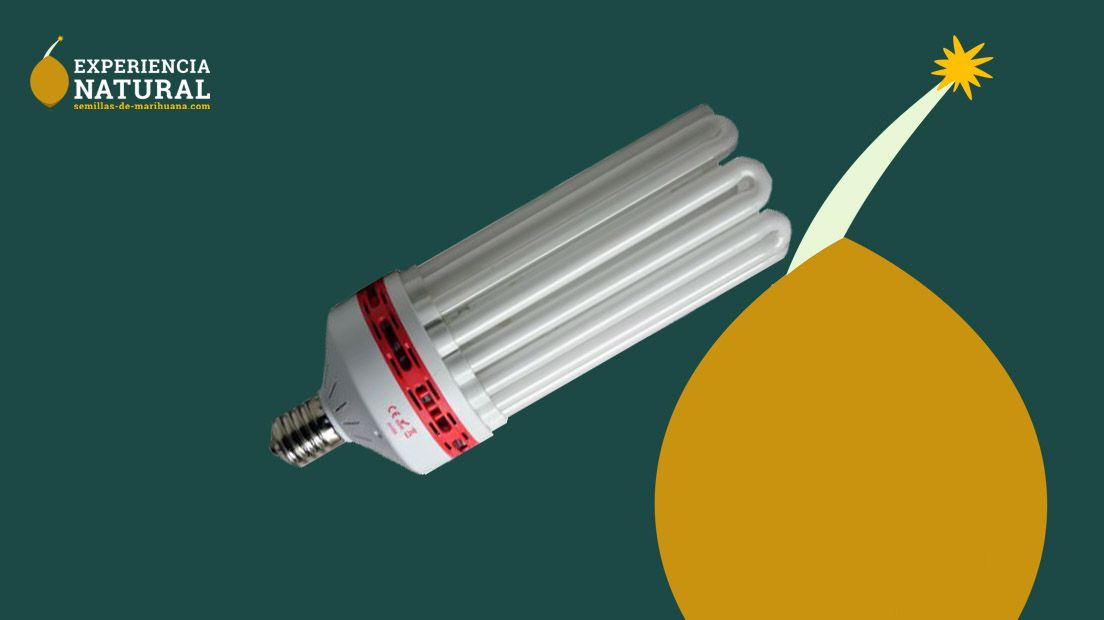
Lighting with high-pressure lamps
Then we have what are known as high-pressure bulbs, with two main types: metal halide (MH) bulbs, nowadays no longer in use due to EU efficiency standards, and sodium vapour (HPS) bulbs.
Metal halide (MH) light is a type of high-intensity halogen lamp commonly used for indoor and outdoor lighting. It uses a mixture of gases, mainly sodium, to produce light. These HM lamps have the ability to produce a bright, off-white light, making them ideal for outdoor lighting applications, such as street light poles. These HPS lamps are also used in the agricultural industry, they are ideal for marijuana cultivation as they can provide a significant amount of light in a relatively small area.
High pressure sodium lamps, often abbreviated as HPS, are a type of lamp that produces a bright amber light. They are made of materials such as glass and aluminium and have a layer of sodium vapour inside them that causes them to produce light. These HPS lamps can produce a large amount of light using a relatively low electrical current. These HPS lamps are available in different wattages, which means that they can be placed in a variety of locations, from small rooms to large greenhouses.
HMs were not used as much, but are rather relegated to the growing phase in large spaces. Sodium lamps, on the other hand, are ideal for lighting marijuana, especially in the flowering stage, because of their intensity, which maximises the harvest. They are available in different wattages, generally ranging from 100W to 1000W. For optimal production results, 400 to 600W per square metre are usually used.
What about LED grow lights?
Surely LED lamps are the best option nowadays, until five years ago they were not the most convenient option, basically because it involved making a fairly powerful investment that is not amortised so quickly. However, that is now a thing of the past and the cost is now amortised very quickly.
LED lights are a type of lighting that has become very popular in recent years. These LED lights are made of materials such as silicon and aluminium and use an electric current to produce light. These LED lights are very energy efficient as they can produce a significant amount of light with very low power consumption.
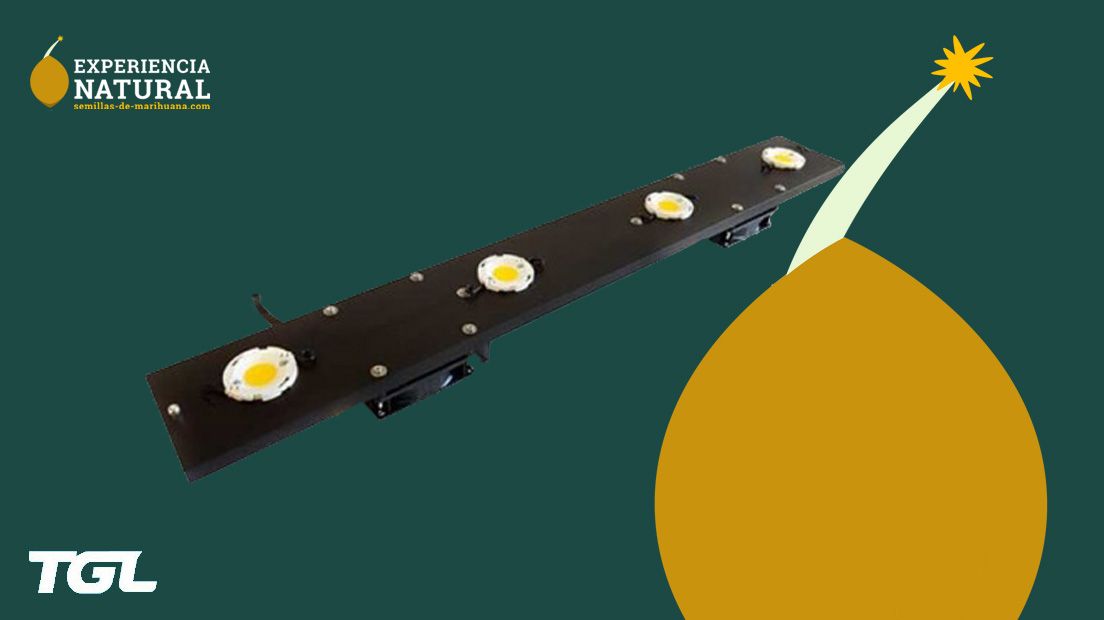
Lighting with LEC lamps
Ceramic Emitting Lights (LEC) are a type of energy-saving lamp commonly used for indoor and outdoor lighting. These LEC lights produce bright white light and are also very energy efficient. They are the natural replacement for HM and HPS bulbs, as they have similar characteristics and deliver twice the output for the same power consumption.
Ceramic lamps are among the latest to appear on the market and it seems that they will really take over from HPS lamps, which are the most widely used at the moment. Their characteristics are similar, the good thing is that they consume half as much for the same output. On the downside, they are more expensive. Visit our article on LEC lamps in this blog or visit our online shop to buy one.
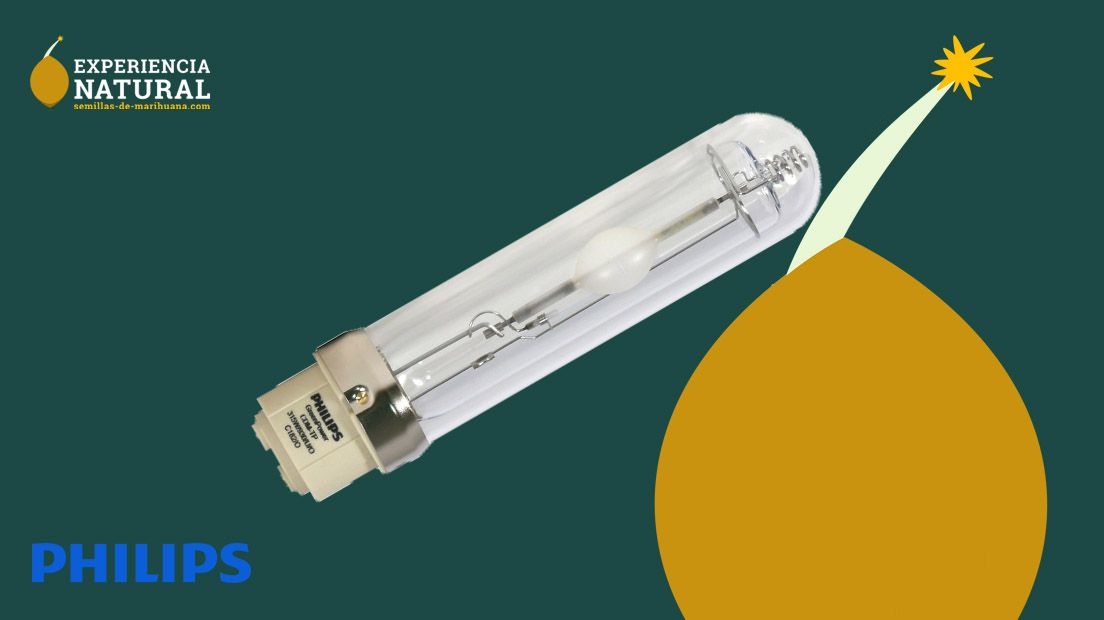
In order to work, the lamps used to light indoor cannabis cultivation have 3 parts, each with its own variants. Below we will tell you the most important characteristics of each one so that you can choose the one that best suits your needs, both in terms of cultivation and investment.
Ballasts for marijuana growing
The first part to look out for is what is known as the ballast, the part that makes the bulb light up (whether it is a metal halide or sodium vapour bulb). It converts the electricity to the specifications that the bulb needs. Each ballast is for a specific wattage, and must be matched to the wattage of the bulb, be it 250, 400 or 600 watts (except dimmable ones). This is necessary for HM, HPS and LEC lamps, as LED and CFL lamps already have it integrated.
There are 2 types of ballasts: on the one hand, electromagnetic ballasts are cheaper, but they are also less effective. And, on the other hand, electronic ballasts, whose efficiency justifies the price difference with the previous ones because they achieve 30% more lumens using the same power.
Electromagnetic ballasts
Electromagnetic ballasts are an essential part of a cannabis growing system. These devices are responsible for regulating the amount of current flowing through the grow lamp. These ballasts use a coil and a capacitor to regulate the current. Electromagnetic ballasts are cheaper than electronic ballasts, but have some disadvantages, such as a higher amount of noise and lower energy efficiency. Electromagnetic ballasts are an important part of a cannabis growing system, as they help to maintain a stable and controlled light.
Electronic ballasts
Electronic ballasts are specialised devices for light control in cannabis cultivation. These devices are responsible for regulating the amount of current that is emitted from the grow lamp. Electronic ballasts are devices that are used to regulate the electric current to a lamp. These ballasts use an electronic circuit to regulate the current. These ballasts are more expensive than electromagnetic ballasts, but have some advantages, such as less noise and higher energy efficiency. Electronic ballasts can also adjust the light level, which helps to increase flowering production. These devices are also useful for keeping the light stable and controlled in cannabis crops.
But electronic ballasts also have another great advantage: they can be dimmable, which means you can adjust them to the power and intensity you need without having to change the bulb, which also saves money.
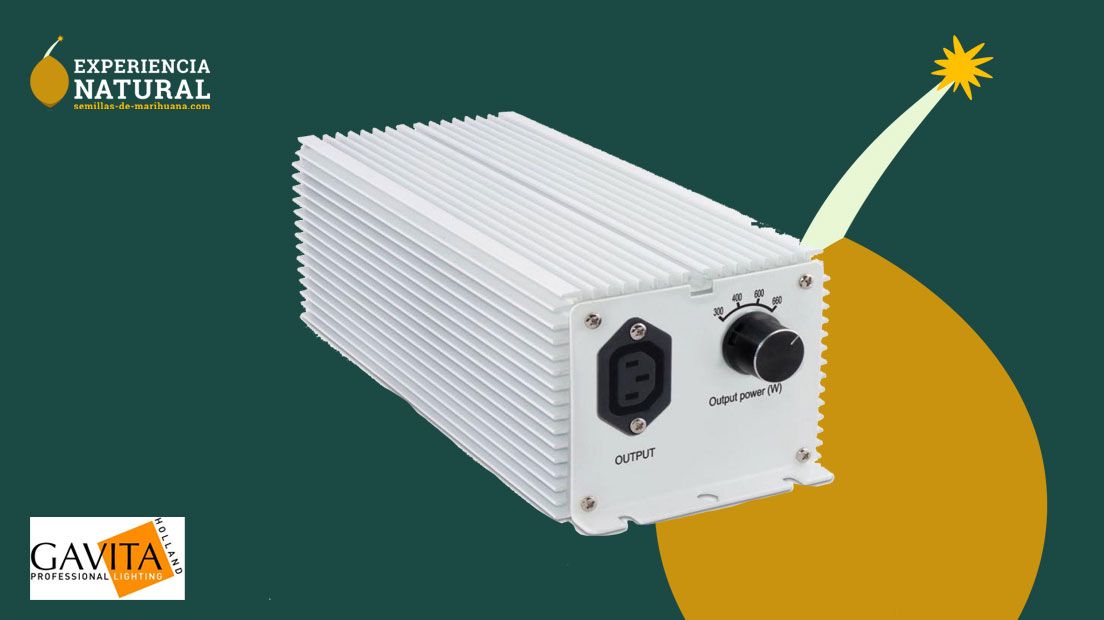
Reflectors for marijuana lighting
Reflectors are one of the most important accessories for any cannabis growing system. They have the ability to redirect the light from the lamps that is directed away from the plant towards the plant, which helps to increase yields. Some of the most commonly used reflectors for cannabis cultivation are aluminium reflectors, which usually have a silver or silver coated reflective surface. These reflectors are placed directly on top of the grow lights to increase the amount of light the plant receives.
Reflectors in an indoor cannabis grow are an important element that deserves attention. In fact, they are essential for one simple reason: if the distance between the spotlight and the plants is 65cm or more, they will only receive a quarter of the light intensity, which translates into a much lower production capacity.
To make the most of the lumens we need to keep the plants as close as possible to the light source but always at the right temperature, around 26 degrees, and good reflectors will allow us to make the most of the power and intensity of the bulbs.
Within the reflectors there are reflectors of different qualities and prices. The cheapest reflectors can reflect up to 80% light, which is not bad at all. The downside is that after a few months they can rust and then the reflection drops to 60%.
If you can invest a little more, the most recommendable option is to get one of the reflectors that come covered with a transparent film that protects the aluminium. Although they are a little more expensive, they guarantee a reflection of 97%, almost perfect, that does not decay over time.
If you want even higher quality, there are some high-end options. For example, you have some that reflect a certain spectrum of light and thus further optimise the plant’s development. Or you can even opt for cooltubes, or cooled reflectors, which are useful when the temperature in the grow room rises, and also serve to bring the spotlights as close as possible to the plants without burning them.
Other grow lighting accessories
In addition to the jewel in the crown, which are the lamps, undoubtedly the fundamental part of grow lighting, there are many other accessories that must be taken into account, and without which the system would not work. We show you the most important ones.
Sockets
Sockets are used to connect the light to the grow lamps and are usually integrated into the reflectors. They are essential for cannabis cultivation, as they provide a secure connection between the socket and the lamp. A suitable socket can maintain a strong and secure connection between the two parts. Some of the most common sockets are threaded sockets, which are screwed directly onto the reflector.
Reflective plastics
Reflective sheeting is an effective way to increase the amount of light reaching the plant. These plastics are usually placed on the sides of the crop to reflect light in the direction of the plant and increase the amount of light reaching the plant.
Black and white plastic
Reflective plastics for cannabis growing are an essential tool for growers who want to get the best results. These plastics are generally black and white in colour and have a variety of uses. When used as a reflective material, these plastics help increase the amount of light reaching the plant, which increases crop yield. These plastics also help to maintain the environmental conditions of the plant, which helps to create the right environment for the best yield.
Metallised Reflective
Another reflective plastic option for cannabis growing is metallised. These are plastics coated with a layer of metal to provide greater light reflection than black and white plastic. Metallised plastics are also generally used on the sides of the growing area, as they provide better light harvesting for the plant. These plastics also have the advantage of maintaining the plant environment better.
Reflective metallised Mylar
Mylar reflective plastics are also a good choice for cannabis cultivation. These plastics are made from a material known as Mylar, a type of polyester coated with aluminium. These plastics are the most helpful in increasing the amount of light reaching the plant, which maximises the yield of the crop. Mylar can reflect more than 95% of the light back into the body of the plant, which improves plant growth and development. These plastics also maintain the growing conditions better.
Coated or plain?
Cannabis growing plastics can also be found in two different types: coated or smooth. Coated plastics have a rough surface that helps to maximise and diffuse light better, while smooth plastics have a smooth surface that helps to simply maximise light reflection. When choosing between these two types, it depends on the individual needs of the grower. Coated plastics perform better than smooth plastics, so if the grower wants to get the best results, it is better to choose coated plastics. On the other hand, smooth plastics are cheaper, so if the grower wants to save money, it is better to choose smooth plastics.
Cables
Cables are an essential part of a cannabis growing system. They are used to connect reflectors, ballasts and the grow lamp. The cables have the ability to provide a safe and reliable connection between the electronic devices. Cables are also useful for transmitting the current signal from ballasts to grow lights. These devices are essential for cannabis cultivation, as they help to ensure that light is transmitted safely and efficiently.
What is the best lighting for growing marijuana?
The best choice in marijuana lighting is LED lights. When it comes to growing marijuana, lighting is one of the most critical factors for a successful harvest. And there are many different options when it comes to lighting. But if you want to get the best results, the best choice for marijuana lighting is an LED panel.
LEDs are a highly efficient form of lighting that can provide the right light for a marijuana grow. These lights are usually dimmable, they can be adjusted to produce the exact amount of light and the optimal spectrum for photosynthesis and compound production. This means that an LED panel is more efficient than any other form of lighting.
When choosing an LED light for your marijuana lighting, you should make sure that it is a good quality product. This means that you should look for LED lights that have a lifespan of at least 50,000 hours. This lifespan will ensure that these LED lights will be working for a long time without the need for replacements.
Another advantage of LED panels is that they are very safe to use. These lights do not generate heat, which means that there is no risk of burns or heat burns that can be seen with other forms of lighting. This makes LED lights safe to use for any type of grow.
Finally, LEDs are a very economical option for marijuana lighting. These lights are very energy efficient, which means you won’t spend a lot of money on your electricity bill. This means that even if you spend a little more on a good quality LED light, your electricity bill will be reduced in the long run. This makes LED lights an excellent choice for those looking to save money.
As you can see, LED panels are the best choice for marijuana lighting. These lights offer a highly efficient light that provides the best results without excessive costs. In addition, these lights are safe to use and have a much longer lifespan than other lights, making them an excellent long-term option. If you are looking for the best option for marijuana lighting, LEDs are the way to go.
Additional considerations
When talking about high-pressure bulbs, it should be noted that whatever bulbs you use, you should replace them approximately every 4 crops, as they deteriorate with use and after 4 cycles their ability to stimulate plant production decreases. CFLs and LECs last considerably longer. The longest lasting of all are LEDs.
In our experience, to spend as little as possible and have a great yield, it is best to have a mixed LEC bulb that can make a good growth and a spectacular flowering. Especially if you choose a dimmable electronic ballast, plus an adjust a wing type reflector. Although with a slightly higher initial investment we can opt for an LED, and this is the best option in the medium term, in terms of cost, durability and efficiency.
If you are looking for indoor growing equipment and lighting, take a look around our shop where you will find different options, qualities and prices. Count on us to answer any questions you may have and choose the option that suits you best. Here you have a video where you can see marijuana lighting equipment while they tell the news about the legalisation of marijuana in Denver.
https://youtu.be/8RKWAM4I3cY
A marijuana plant generally requires a minimum of 30,000 lumens, and it may need up to five times more to fully maximize its potential. While it’s possible to grow with fewer lumens, the plants will be much smaller and yield less.
A marijuana plant in the growth phase needs 18 hours of light per day, with complete darkness during the remaining 6 hours.
During the flowering stage, a marijuana plant requires 12 hours of light and 12 hours of complete darkness each day.
Suitable lighting for marijuana plants includes a spectrum range of 5,000 to 6,500 K for the growth phase. For flowering, a colour temperature between 2,000 and 4,000 K is recommended.
How many lumens does a marijuana plant need?
How many hours of light does a marijuana plant need during growth?
How many hours of light does a marijuana plant need during flowering?
What type of light should I use for my marijuana plant?
Follow us on social media and in our newsletter if you enjoyed this marijuana lighting content. Then continue reading with our monograph on cheap LEDs: Cheap LED Marijuana Lights, What They Are and How to Use Them.
Founder of Experiencia Natural, creative and entrepreneur, designer, master in grower and marketing. For a normalization of all plants and substances, giving priority to patients and users.







